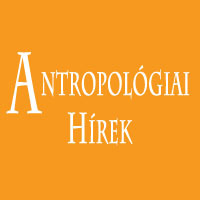Szív- és érelmeszesedésben szenvedett Ötzi, a jégember
https://mult-kor.hu/sziv-es-erelmeszesedesben-szenvedett-tzi-a-jegember-20180529
Honfoglaló temetőt tártak fel Budapesten [III. kerületi Harsánylejtő]
http://regeszet.aquincum.hu/honfoglalo-temetot-tartak-fel-budapesten/
Ancient tooth shows Mesolithic ancestors were fish and plant eaters
https://phys.org/news/2018-05-ancient-tooth-mesolithic-ancestors-fish.html
Micro-CT scans show 2,100-year-old 'hawk' mummy a stillborn baby
https://phys.org/news/2018-05-micro-ct-scans-year-old-hawk-mummy.html
CT of hawk mummy finds it’s a stillborn baby [video 2:17]
http://www.thehistoryblog.com/archives/51637
Különleges varázserővel bírhatott a sólyomnak hitt egyiptomi magzatmúmia
https://mult-kor.hu/kulnleges-varazserovel-birhatott-a-solyomnak-hitt-egyiptomi-magzatmumia-20180601
The genes from Iceland's first settlers reveal the origin of their population in detail
https://archaeologynewsnetwork.blogspot.com/2018/05/the-genes-from-icelands-first-settlers.html
Wars and clan structure may explain a strange biological event 7,000 years ago
https://archaeologynewsnetwork.blogspot.com/2018/05/wars-and-clan-structure-may-explain.html
Extremely rare evidence of Roman crucifixion uncovered in Italy
https://archaeologynewsnetwork.blogspot.com/2018/05/extremely-rare-evidence-of-roman.html
Szögekkel átfúrt ókori bokák árulkodnak a kereszthalál kegyetlenségéről
https://mult-kor.hu/szgekkel-atfurt-okori-bokak-arulkodnak-a-kereszthalal-kegyetlensegerol-20180601
First peoples: Study finds two ancient ancestries 'reconverged' with settling of South America
https://archaeologynewsnetwork.blogspot.com/2018/05/first-peoples-study-finds-two-ancient.html
Előkelő rómaiak érintetlen szarkofágjára bukkantak Szerbiában
https://mult-kor.hu/elokelo-romaiak-erintetlen-szarkofagjara-bukkantak-szerbiaban-20180601
Serbian archaeologists find sarcophagus with two skeletons and jewellery in Roman city of Viminacium
https://archaeologynewsnetwork.blogspot.com/2018/06/serbian-archaeologists-find-sarcophagus.html
Two skeletons found in one Roman sarcophagus in Serbia
http://www.thehistoryblog.com/archives/51624
Leather pouch containing coins found under Pompeii skeleton
https://archaeologynewsnetwork.blogspot.com/2018/06/leather-pouch-containing-coins-found.html
2,300 year old 'Athlete's Tomb' found intact outside Rome [video 3:10]
https://archaeologynewsnetwork.blogspot.com/2018/06/2300-year-old-athletes-tomb-found.html
Érdekes
Keszthely-Fenékpuszta késő-római erődje
http://www.fenekpusztacastrum.com
Illegális átkok Aquincumból, ókori csípőficam és torzított koponyák a Kárpát-medencében
https://qubit.hu/2018/05/28/illegalis-atkok-aquincumbol-okori-csipoficam-es-torzitott-koponyak-a-karpat-medenceben
Különleges varázserővel bírhatott a sólyomnak hitt egyiptomi magzatmúmia
https://mult-kor.hu/kulnleges-varazserovel-birhatott-a-solyomnak-hitt-egyiptomi-magzatmumia-20180601
Roman cemetery found in Slovenia
https://archaeologynewsnetwork.blogspot.com/2018/05/roman-cemetery-found-in-slovenia.html


